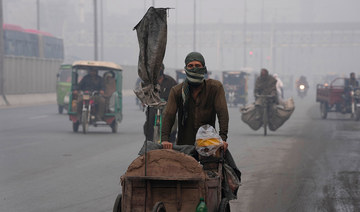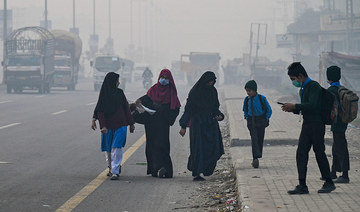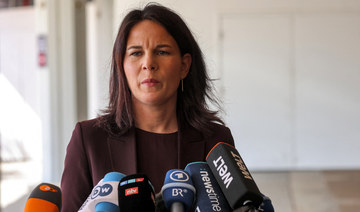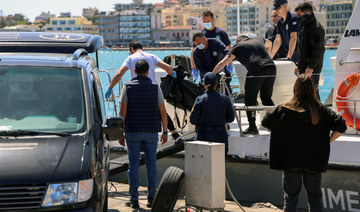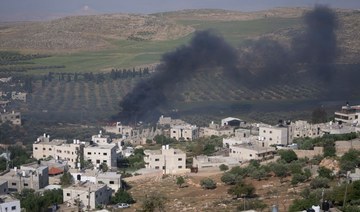PYONGYANG: She dances beneath portraits of two smiling dictators, a modern young woman in a central Pyongyang plaza who twirls to music calling on North Koreans to die for their leader.
When she speaks, a torrent of reverence tumbles out for North Korea’s ruling family, as if phrases had been plucked at random from a government newspaper: “The revolution of the Great Leader” ... “Laborers trust and venerate Marshal Kim Jong Un.” And as hundreds of students dance behind her in a choreographed display of loyalty, she is adamant about one thing: North Korea, she insists, has no generation gap.
“The spirit of the youth has remained the same as ever!” Ryu Hye Gyong says.
But look more closely — look beyond her words, beyond the propaganda posters on every street, and the radios playing hymns to the ruling family — and the unspoken reality is far more complicated.
A 19-year-old university student with a confident handshake and carefully styled hair, Ryu lives in a city that today feels awash in change. There are rich people now in Pyongyang, chauffeured in Mercedes even as most citizens of the police state remain mired in poverty. There’s a supermarket selling disposable diapers. On sidewalks where everyone once dressed in drab Maoist conformity, there are young women in not-quite miniskirts and teenage boys with baseball caps cocked sideways, K-pop style.
In this profoundly isolated country, a generational divide is quietly growing.
Here, where rulers have long been worshipped as all-powerful providers, young people have grown to adulthood expecting nothing from the regime. Their lives, from professional aspirations to dating habits, are increasingly shaped by a growing market economy and a quietly thriving underground trade in smuggled TV shows and music. Political fervor is being pushed aside by something else: A fierce belief in the power of money.
Conversations with more than two dozen North Korean refugees, along with scholars, former government officials and activists, make it clear that young people are increasingly unmoored from the powerful ideology the government long ago placed at the center of every life.
“When Kim Jong Un speaks, young people don’t listen,” says Han Song Yi, 24, who left the North in 2014, dreaming of pop-music stardom in the South. “They just pretend to be listening.”
In her tight jeans and gold-speckled eyeshadow, Han loves talking about fashion and the K-pop bands she and her friends secretly listened to back home. She can also deconstruct how the sudden emergence of short skirts in her hometown in the autumn of 2012 mirrored not just the ascension of Kim Jong Un, the new leader often photographed with his glamorous wife, but also the political cynicism growing around her.
“North Korea in the past, and North Korea today are so different,” she says.
Nobody in North Korea will talk to an outsider about this, and it’s easy to see why.
Stand at nearly any Pyongyang street corner and reminders of the state’s power are everywhere. Mounted portraits show the first two rulers: Kim Il Sung, who shaped the North into one of the world’s most repressive states, and his son, Kim Jong Il, who created the personality cults that now dominate public life. Immense rooftop signs spell out praise for grandson Kim Jong Un, the ruling party and the military.
The message is unmistakable: “People are always careful about what they say,” says Han.
For generations, propaganda about the Kim family was all that most North Koreans knew, a mythology of powerful but tender-hearted rulers that still suffuses everything from children’s stories to TV shows.
It’s an emotional tug felt by many older North Koreans. In part that’s because they remember the days of relative prosperity, when the state provided food, apartments and clothing.
An economic shift began in the mid-1990s, when Soviet aid ended and devastating floods caused widespread famine. The police state weakened. Smuggling flourished. While the state eventually tightened its hold again, private enterprise just grew.
But to people who came of age after the famine, when it had become clear the regime was neither all-powerful nor all-providing, the propaganda is often just background noise.
“After a while, I stopped paying attention,” says Lee Ga Yeon, who began helping support her family as a teenager during the famine by selling food door to door. “I didn’t even think about the regime anymore.”
That lack of interest frightens the regime, whose legitimacy depends on its ability to remain at the core of life.
“They know that young people are where you get revolutions,” says Hazel Smith, a North Korea scholar at SOAS, University of London and former aid worker in North Korea. “This is the cleavage that the government is worried about.”
Kim Jong Un, who wasn’t even 30 when he came to power after his father’s 2011 death, now faces the challenge of his own generation.
On his gentler days, Kim has reached out to young people. There was an increase in youth-oriented rallies after Kim’s ascension, and public pledges of youth loyalty. There’s propaganda now clearly aimed at young people, like the all-woman Moranbong Band, which performs in tight skirts and high heels.
Most of these young people have grown up with at least some access to smuggled DVDs or flash drives, and South Korean soap operas are now beloved, despite being officially banned. To many young Northerners they are windows onto a modern world.
Today, couples in Pyongyang can occasionally be spotted holding hands. In a culture where arranged marriages were the norm until very recently, young people now choose their own spouses. And college students dream of business jobs.
But while the generational divide has grown, there have been no signs of youthful anger: no university protests or political graffiti. Because the power of the police state remains immense. And because the gap isn’t about politics.
“It’s not about the regime,” says Lee, who now studies literature at one of South Korea’s top universities. “It’s about money.”
Money now courses through North Korea. Experts believe the private sector, from small traders to textile factories, accounts for as much as half of North Korea’s economy. There’s also much more to buy now: battery-powered bicycles, Chinese electronics, solar panels for electricity outages.
“In the past, everybody wanted to be a government official, that was the number-one dream,” says Lee. “But more and more, people know that money can solve everything.”
In North Korea, a generation gap grows behind the propaganda
In North Korea, a generation gap grows behind the propaganda
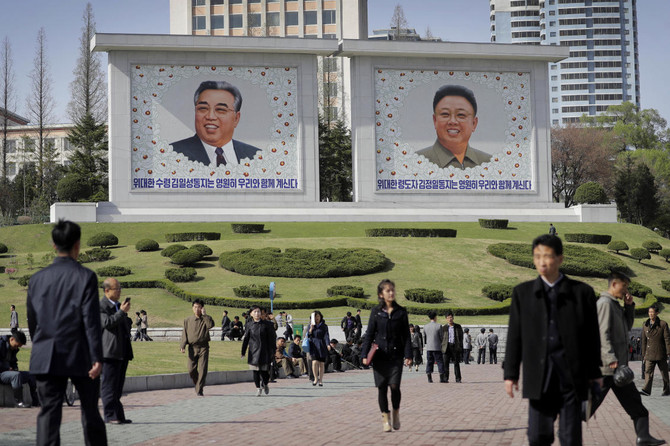
Finance firms urge ambitious action on plastic pollution

- Curtailing the estimated 400 million metric tonnes of waste produced every year is a crucial part of efforts to protect biodiversity, with microplastics found everywhere from the mountainous Himalayas to staple foods and even human blood
LONDON: A group of 160 financial companies on Friday urged governments to agree a treaty to end plastic pollution that would help spur private sector action, ahead of the next round of global talks in Canada.
The fourth meeting of the Intergovernmental Negotiating Committee on Plastic Pollution (INC-4) is due to be held in Ottawa next week to lay the groundwork for an eventual deal before the end of the year.
Curtailing the estimated 400 million metric tonnes of waste produced every year is a crucial part of efforts to protect biodiversity, with microplastics found everywhere from the mountainous Himalayas to staple foods and even human blood.
To help fix the problem, the finance firms, which include Britain’s biggest investor Legal & General Investment Management and Canadian pension investor CDPQ, called for a policy framework backed up by binding rules.
Among specific steps, the group called for the treaty to set an objective for all public and private finance to be consistent with the goal of eliminating plastic pollution, similar to that in the Paris climate agreement and the Kunming-Montreal global biodiversity framework.
It also called for companies to assess and disclose plastic-related risks and opportunities; clearer plastic-related policies and targets from governments in areas like waste creating and recycling; and for further private investment to be directed to ending plastic pollution.
“A clear transition pathway laid out in the Treaty will help leverage finance at scale for this massive task of ending plastic pollution worldwide,” said Anne-Sophie Castelnau, global head of sustainability at ING, one of the signatories.
Steve Hardman, CEO of Plastic Collective, an NGO which designed the world’s first plastic waste reduction bond alongside Citi and the World Bank, welcomed the support but called for business to provide more financial solutions.
In January, the World Bank issued the $100 million bond to finance plastic-reduction projects in Ghana and Indonesia. Investors will be paid a rate linked to plastic removal credits generated by the projects.
Finnish PM: EU should help end migrant influx from Russia

- European Commission President Ursula von der Leyen visits the border to assess security situation
HELSINKI: The EU should take measures to help Finland stop an influx of migrants via Russia, Finnish Prime Minister Petteri Orpo said.
Finland last year shut its long border with Russia amid a growing number of arrivals from countries including Syria and Somalia.
It accused Moscow of weaponizing migration against the Nordic nation and the EU, an assertion the Kremlin denies.
Finland’s government has closed eight of its nine checkpoints with Russia.
The only one that remains open is dedicated to rail travel and cargo trains mainly run through it.
“We are preparing our legislation, but we also need EU measures,” Orpo said, without elaborating, after visiting the Nordic country’s border with European Commission President Ursula von der Leyen.
Von der Leyen told the same press conference that the EU Commission was working closely with the migrants’ countries of origin, agreeing with Finland’s position.
“What we see is that a state is instrumentalizing poor people to put pressure on another state, so that is a clear security issue,” she said.
She said that the measures taken to deal with migrants from Russia must balance protecting the security of borders and international obligations.
Following Poland and Lithuania’s example on their borders with Belarus, the Finnish government is drafting legislation allowing border guards to block asylum seekers entering the country from Russia.
“We all know how (Russian President Vladimir) Putin and his allies instrumentalize migrants to test our defenses and to try to destabilize us,” von der Leyen told officials.
“Now Putin is focusing on Finland, and this is no doubt in response to your firm support of Ukraine and your accession to NATO.”
Von der Leyen and Orpo flew in a Finnish helicopter over the landscape of forests and towns on the border.
Von der Leyen is campaigning as a conservative European People’s Party bloc member for a second term in office as head of the EU’s powerful executive branch.
Security is a top EPP theme before the June 6-9 European Parliament elections.
Most of the migrants hail from the Middle East and Africa.
Most of them have sought asylum in Finland, a member of the EU and NATO with a population of 5.6 million.
Finland joined NATO in April 2023, ending decades of neutrality after the country’s defeat by the Soviet Union in the Second World War.
In March, Sweden also became a member of the trans-Atlantic alliance.
The move dealt a major blow to Putin, with a historic realignment of Europe’s post-Cold War security landscape triggered by Moscow’s offensive against Ukraine.
US sanctions fundraisers for extremist West Bank settlers who commit violence against Palestinians
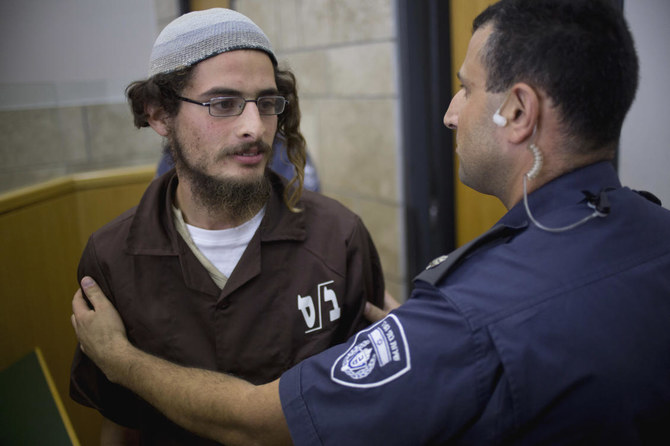
- Move comes as West Bank sees some of its worst violence perpetrated by settlers against Palestinians since Gaza war
WASHINGTON: The Biden administration on Friday imposed sanctions on two entities accused of fundraising for extremist Israel settlers already sanctioned, as well as the founder of an organization whose members regularly assault Palestinians.
The Treasury Department announcement comes as the West Bank has seen some of its worst violence perpetrated by extremist settlers against Palestinians since the war in nearby Gaza began.
There is also friction between President Joe Biden and Israeli Prime Minister Benjamin Netanyahu, whose far-right government has reacted angrily to previous sanctions imposed against West Bank settlers.
Included in the Friday sanctions are two entities — Mount Hebron Fund and Shlom Asiraich — accused of raising funds for sanctioned settlers Yinon Levi and David Chai Chasdai.
Both men were previously sanctioned by the Biden administration for violently attacking Palestinians in the West Bank.
The penalties aim to block them from using the US financial system and bar American citizens from dealing with them.
The fundraising campaign established by Mount Hebron Fund for Levi and by Shlom Asiraich for Chasdai generated the equivalent of $140,000 and $31,000, respectively, according to US Treasury.
In Levi’s case, the fund now sanctioned by the Biden administration is linked to the regional council in the area, a body that receives state money. The Biden order Friday stopped short of sanctioning the council itself.
Rights groups say that the expansion of illegal settler outposts in the West Bank is enthusiastically supported by the regional councils and nudged along by Israel’s current national government — the most far-right in the country’s history.
The Biden order also skirted sanctioning crowdfunding websites where funds were raised, GiveChak and New York-based Charidy.
In Chasdai’s case, the fundraiser on Charidy was organized by Shlom Asiraich, which raises money for imprisoned Jewish extremists.
Both online fundraisers have now been taken down. But at least one fundraiser linked to a settler previously sanctioned by the Biden administration, Moshe Sharvit, remains online. As of Friday, the page on GiveChak had raised the equivalent of over $879,000.
Additionally, the State Department is designating Ben-Zion Gopstein, the founder and leader of Lehava, an organization whose members have assaulted Palestinian civilians.
Treasury Deputy Secretary Wally Adeyemo said the organizations “undermine the peace, security, and stability of the West Bank. We will continue to use our tools to hold those responsible accountable.”
In February, Biden issued an executive order that targets Israeli settlers in the West Bank who have been accused of attacking Palestinians and Israeli peace activists in the occupied territory.
Hindu-Muslim divisions sway voting in Indian district scarred by deadly riots
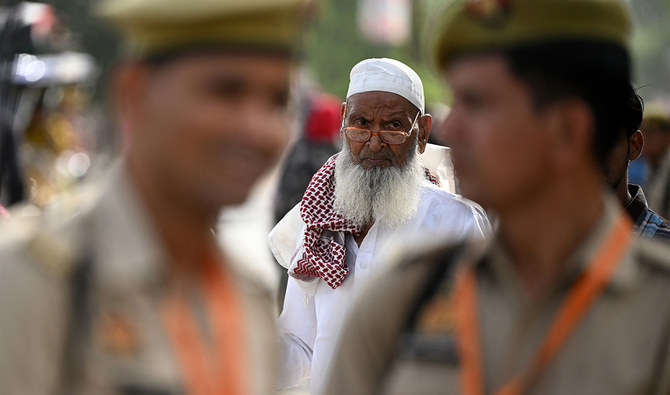
- Villages are largely self-segregated by religion in and around Muzaffarnagar in the most populous Uttar Pradesh state
- Violent clashes broke out in 2013 after two Hindus stabbed Muslim youth to death, accusing him of harassing their sister
MUZAFFARNAGAR: Hindu-Muslim enmity made way for peace in an Indian district that saw deadly riots a decade ago but religious divisions still influence residents who voted on Friday in general elections in which Hindu nationalism is a key theme.
Villages are largely self-segregated by religion in and around Muzaffarnagar district, in the most populous northern state of Uttar Pradesh, but people say there is no longer tension between the majority Hindu and minority Muslim communities.
Violent clashes broke out here in 2013 after two Hindus stabbed a Muslim youth to death, accusing him of sexually harassing their sister. They were later beaten to death by a Muslim mob, which sparked riots that killed about 65 people, mostly Muslims, and displaced thousands.
Violence has not returned to the district known as the country's sugarcane-belt, but political divisions remain as Hindus typically vote for Prime Minister Narendra Modi's Bharatiya Janata Party (BJP) and Muslims for the opposition.
Modi's government has "controlled Muslims", said Ramesh Chand, a Hindu biscuit baker in Kairana city near Muzaffarnagar.
Critics accuse the nationalist BJP of targeting India's 200 million minority Muslims to please their hardline Hindu base - charges they deny.
Modi is widely expected to win a third term on the back of strong growth, welfare and his personal popularity despite some concern about unemployment, price rises and rural distress.
Chand said Modi had improved security in the region. "We can live in peace, whether or not we have jobs ... We can sleep with our doors open."
There were opposing views too.
In Jaula village, sugarcane farmer Mohammed Irfan, 50, said Modi's "high-handedness against Muslims" as well as unemployment and inflation were major reasons for him voting for the opposition Samajwadi Party.
Uttar Pradesh elects 80 lawmakers to the 543-member lower house of parliament, the most among all states, and a strong showing here is critical to the nationwide outcome.
Support for Modi was visible in Kutba Kutbi village, the epicentre of the 2013 riots.
Although there is "brotherhood" between the two communities now, nearly all Muslim families left the village after the riots, said Vinay Kumar Baliyan, 43, a farmer who said he supports Modi for promoting economic growth and raising India's stature globally.
But Irfan said Muslims are expected to vote in larger numbers this time as Eid celebrations this month brought many migrant workers and students home.
After Pakistan alert, WHO likely to issue wider warning on contaminated J&J cough syrup
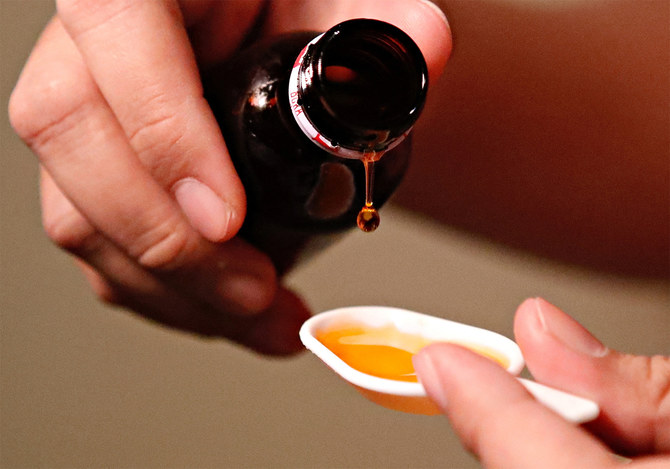
- The UN health body said it puts out global medical product alerts to ‘encourage diligence’ by authorities
- The WHO this week sent out alert on five batches of contaminated cough syrup ingredients found in Pakistan
LONDON: The World Health Organization is likely to issue a wider warning about contaminated Johnson and Johnson-made children’s cough syrup found in Nigeria last week, it said in an email.
Nigeria’s regulator recalled a batch of Benylin paediatric syrup last Wednesday, having found a high level of diethylene glycol in the product during routine testing.
The contaminant, alongside another closely related toxin, ethylene glycol, has been linked to the deaths of more than 300 children in Cameroon, Gambia, Indonesia and Uzbekistan since 2022, though there is no evidence that these incidents are linked with the latest recalls.
The UN health body said it puts out global medical product alerts to “encourage diligence” by national authorities and was likely to do so in this instance, “subject to confirmation of certain details from parties.”
The recalled batch of Benylin syrup was made by J&J in South Africa in May 2021, although Kenvue now owns the brand after a spin-off from J&J last year.
J&J has referred requests for comment to Kenvue. In an emailed statement on Friday, Kenvue said it had carried out tests on the batch recalled by Nigeria and had not detected either diethylene or ethylene glycol.
“We continue to work closely with health authorities and the WHO and are engaging with NAFDAC to understand their test results, including verifying the authenticity of the sampled product, the testing methodology used, and results reported by the agency,” the statement added.
Since Nigeria’s recall, five other African countries have also pulled the product from shelves — Kenya, Rwanda, Tanzania, Zimbabwe and South Africa, where the drug was made.
South Africa’s regulator has also recalled another batch of the syrup, which is used to treat coughs, hay fever and other allergic reactions in children.
Diethylene glycol is toxic to humans when consumed and can result in acute kidney failure, although there have been no reports of harm in the latest incident.
RAW MATERIALS
In the 2022 cases, the contamination in the syrups came from the raw materials used by manufacturers in India and Indonesia.
The WHO said it was collaborating with both the manufacturer and regulatory authority in South Africa to investigate the Benylin paediatric syrup, and had information on the source of the ingredients used. Kenvue has previously said it tested its ingredients before manufacture.
The agency said the possibility that the syrup was counterfeit was also “under consideration as part of investigations.”
Earlier this week the WHO sent out a separate alert on five batches of contaminated cough syrup ingredients found in Pakistan that appeared to have been falsely labelled as Dow Chemical products.
It was the first alert the WHO has sent on excipients — elements of a medicine other than the active pharmaceutical ingredient — rather than finished products, the agency confirmed on Friday.
The batches of propylene glycol were contaminated with ethylene glycol.
“It was critical for WHO to also alert manufacturers that may have been procuring this material to exercise more caution,” a WHO spokesperson said by email.
Propylene glycol is not an ingredient in Benylin paediatric syrup, a Kenvue spokesperson said on Friday.


